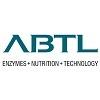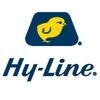Explore all the information on
Enzymes in poultry nutrition
Enzymes are proteins involved in all anabolic and catabolic pathways of digestion and metabolism. Digestive enzymes are categorised as endogenous or exogenous. Endogenous enzymes are produced by the animal and exogenous enzymes are administered from outside. Enzyme supplementation decreases nutrient loss through excreta, reduces diets nutritional levels, improves nutrient availability; thus, enhances production efficiency and profitability. In addition, exogenous enzymes hydrolyse non-starch polysaccharides, increase the usage of feed energy, reduce negative impacts of non-digestive residues on digesta viscosity, and improve gut microbial ecosystem. Cellulase, glucanase, pectinase, xylanase, galactisidases, phytase, non-starch polysaccharides degrading enzymes, amylase, lipase, cellulase, and protease are the most common enzymes used in poultry feed.
Under certain conditions, elevated butyrate concentrations in the fore- and midgut may induce negative effects on microbiota diversity and/or inflammation. Hear what Dr. Tim Goosens -Global Scientific & Technical Manager - Health by Nutrition, ADISSEO- said about his presentation at the IPSF 2020 during IPPE in Atlanta, USA...
Comments : 5
Recommendations: 6
1. Introduction β-mannans (BM) are commonly present in a wide variety of feedstuffs, including soybean meal, and have been described as one of the major anti-nutritional factors for non-ruminant animals (Bertechini, 2013). Dietary BM are associated with negative effects in pigs and broilers, such as increased intestinal viscosity and decreased nutrient digestibility (Shastak et al., 2015). Despite being naturally found in non-pathogenic substances, these compounds may...
Comments : 0
Recommendations: 0
Introduction Today, the broiler industry plays an important role in supplying the protein requirements of the people of the world. Shortening of broiler rearing cycle enhances the importance of growth during the first week of life (Nistan et al., 1991). Although genetic selection for growth has affected the digestive tract of poultry, the digestive processes are not fully developed on the day of hatch (Croom et al., 1999). Therefore, the insufficient nutrient digestion and...
Comments : 0
Recommendations: 0
If Immunity is your top priority, Immunotech Forte™ is a synergistic combination of systemic enzymes such as Serratiopeptidase, Papain, Bromelain, Bioflavonoids,vitamins and amino acids. It is a fortified immunity enhancer to boost bird’s immune system, reduce stress and gain resistance to disease incidences....
Comments : 6
Recommendations: 3
Dr. Andreas Lemme, Director of Technical Consultancy, answers the question: what hinders or limits protein reduction today? “Firstly, one needs to have good knowledge about the composition and quality of feed ingredients. Technologies are available to quickly get the required information. In the context of amino acid nutrition, we have developed near-infrared spectroscopy calibrations to get the full analysis of ingredients within seconds..."...
Comments : 1
Recommendations: 7
Introduction Soybean meal (SBM) is the most important and preferred source of quality protein in animal feeds (Banaszkiewicz, 2011). Among the oil seeds, SBM contains the highest crude protein (CP) and has the best AA profile, with only 6% crude fibre (Dei, 2011). The AAs in SBM are highly digestible by poultry (Newkirk, 2010). Based on the CP content, SBM can generally be classified as high protein (47% - 50%), or low protein (44% - 46%). Popescu & Criste (2003) suggested...
Comments : 0
Recommendations: 0
Nutrients in most feed ingredients are present in a complex matrix. Therefore, it is anticipated that feed enzymes like protease can exert a wide influence on nutrient digestibility beyond their targeted substrates (Cowieson and Bedford, 2009). For instance, the disruption of protein matrix surrounding starch granules due to protease supplementation had been shown to improve energy digestibility in some cereal grains (McAllister et al., 1993). It is hypothesised that protease may benefit...
Comments : 0
Recommendations: 1
Introduction Soybean meal (SBM) is the most important and preferred source of quality protein in animal feeds (Banaszkiewicz, 2011). Among the oil seeds, SBM contains the highest crude protein (CP) and has the best AA profile, with only 6% crude fibre (Dei, 2011). The AAs in SBM are highly digestible by poultry (Newkirk, 2010). Based on the CP content, SBM can generally be classified as high protein (47% - 50%), or low protein (44% - 46%). Popescu & Criste (2003) suggested...
Comments : 1
Recommendations: 1
Mr. O.P. Singh - Managing Director of ABTL Enzymes, speaks about the main challenges that meat producers are facing in Asia and what can offer ABTL Enzymes as a nutrition and enzyme technology in Asia in this regard...
Comments : 3
Recommendations: 6
A balanced diet is key for human health promotion. Among essential nutrients Selenium is shown to be deficient in many countries worldwide. In animals as well as in humans, Selenium deficiency is associated with a compromised immunity and increased susceptibility to various diseases including the recent epidemic caused by COVID 19. Production of Se-enriched eggs, meat and milk could be an important approach to deal with human Selenium deficiency. INTRODUCTION Many...
Comments : 4
Recommendations: 3


Mycotoxins semiannual survey of mycotoxin in feed in 2023 Taiwan - Second Half
Suggested link
Giles Shih, Chairman and Chief Executive Officer at BioResource International Inc. talks about optimizing profitability, sustainability and animal nutrition....
Comments : 0
Recommendations: 2
PRO-MaXYL™ is a high-performance and refined enzyme combination to improve the performance of modern poultry diets. PRO-MaXYL is the comprehensive solution for flexible poultry diet formulation
...
Comments : 4
Recommendations: 4
.jpg&w=3840&q=75)

On cherche des distributeurs dans plusieurs pays d’Afrique comme le Kenya, l’Ethiopie, la Tanzanie, le Congo, etc
Suggested link
The biggest challenges facing the poultry industry today include disease prevention, particularly in the absence of antibiotics, and optimum nutrition, especially with regards to being able to incorporate novel/local ingredients into the diet. Interestingly these two are linked as much of the disease pressure that challenges current poultry production is enteric in its nature. Since the presence or absence of specific nutrients/antinutrients in the diet will influence the structure of the...
Comments : 35
Recommendations: 20
In the animal food industry, enzymes can help improve animal performance and production economics through a variety of mechanisms: breakdown of substrates in feed and reduction of anti-nutritional substances, such as hydrolysis of phytic acid to improve phosphorus availability.
Marketed enzyme preparations contain the...
Comments : 1
Recommendations: 1
.jpg&w=3840&q=75)

Sustainability: Advanced Lysine source beneficial for farm animals and the environment
Suggested link
Poultry meat is a particularly important protein source as broilers have a high feed efficiency and short production cycle compared to other animal products, making it an affordable, nutritious source of animal protein (Marangoni et al., 2015). Therefore, strategies to improve production performance of broilers will require significant research as this is key to future food security. One nutritional strategy to improve sustainability of poultry production systems is improving the efficiency...
Comments : 0
Recommendations: 2
The on-going battle against African Swine Fever and Covid-19 have caused major challenges globally affecting both food production and food security. This has been very evident in swine production, as most top pork producers and exporters were affected. Spain, being the top pork exporter, was among the first countries to be hit by the Covid-19 pandemic causing disruptions in pork supply not only to its exports but also affecting domestic supply in EU as well. This has also significantly...
Comments : 0
Recommendations: 1
We are presently going through a challenging period of high prices of raw materials and a limited availability of some of these materials. The use of less common raw materials that are readily available, and potentially less expensive, can be an alternative to traditional protein and energy sources and may help reduce the pressure on feed costs. However, new types of ingredients need extra attention to be paid to make sure they are suitable for feed processing, are free of contaminants,...
Comments : 1
Recommendations: 2
Introduction Protein is a major component of animal tissues and products. Thus, adequate intake of dietary protein is essential to optimise growth, production performance, and feed efficiency in poultry. Soybean meal is most commonly used protein source and used around 20-30 % in poultry feed. Now days protein feed ingredients like soybean meal are consistently increasing in cost; so protein has become one of the most expensive nutrients in poultry diet. After feed consumed by...
Comments : 1
Recommendations: 1
Thermostable & granular cocktail enzyme of bacterial source, leveraging total nutrient availability in feed. Suitable for both pellet and mash feed administration....
Comments : 0
Recommendations: 0
INTRODUCTION In the United States and most parts the world, the biggest portion of poultry diets is comprised of carbohydrates, with corn being the main cereal grain used in the feed industry (Moran, 1982; Ai and Jane, 2016; Agristats, 2018; IGC, 2018). Corn is dried on the field or usually dried either by constant flow or batch drying after harvesting, so it could be included in poultry feeds. It has been reported that temperatures while drying could reach more than 100C mainly...
Comments : 0
Recommendations: 0



.jpg&w=3840&q=75)



.jpg&w=3840&q=75)






















